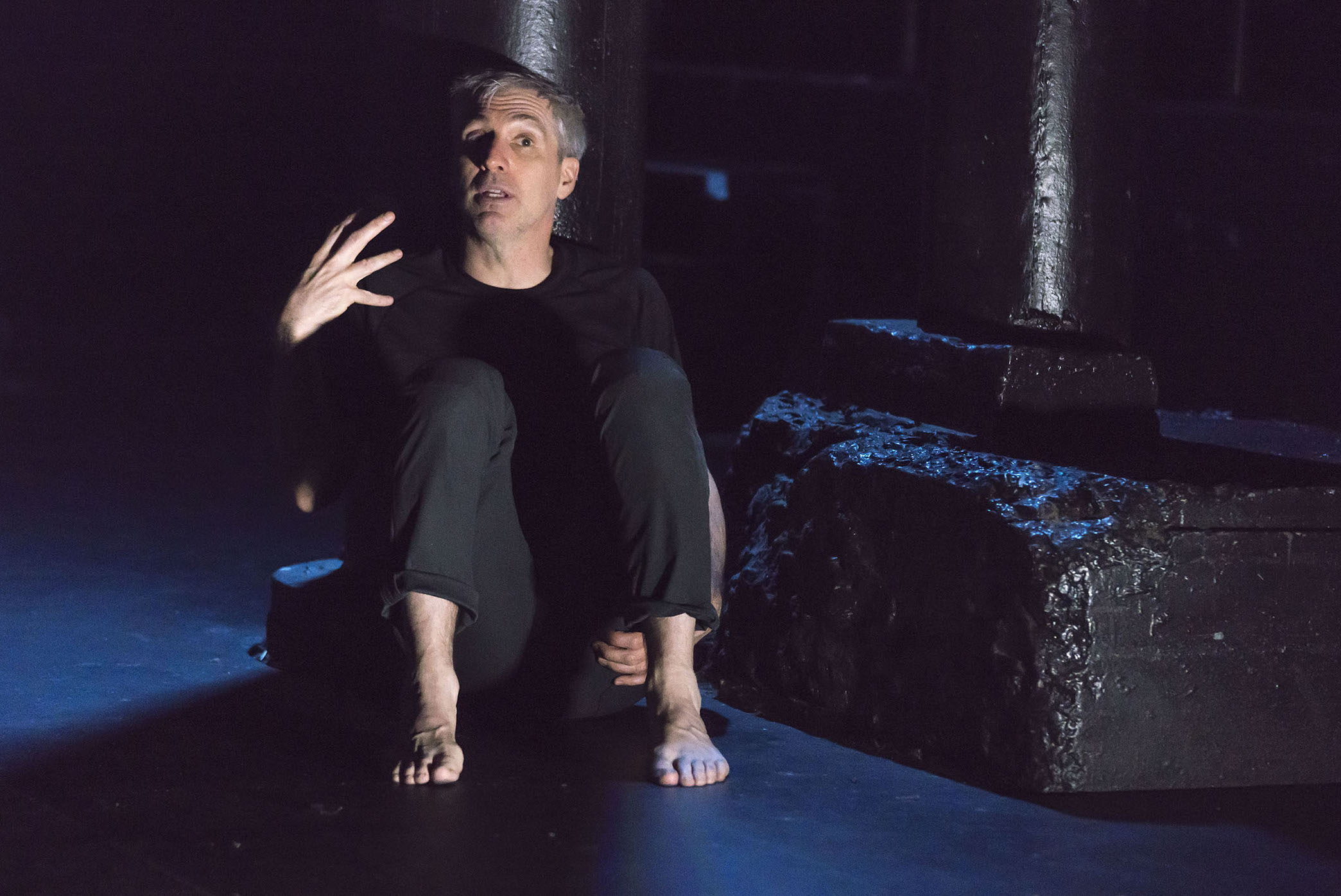

by Samuel L. Leiter
Stephan Wolfert’s Cry Havoc! is a deeply impressive one-person play about the horrors of war. It isn’t, however, so much an anti-war play—the morality or necessity of war itself isn’t being questioned—but an outcry against what war means to its participants, i.e., the process of dehumanization used to wire soldiers for battle as unflinching fighting machines and the failure, at least in America, to “decruit” (Wolfert’s antonym for “recruit”) soldiers for reentry into civilian life.
Its thematic purview also covers the blood and guts of battlefield encounters; the constraints imposed by the “rules of war”; and the anguish of post-traumatic stress disorder (PTSD) that afflicts so many veterans.
Much of this is familiar, in one form or another from various movies, especially recent ones depicting conditions in our Middle East engagements; Cry Havoc!, though, cries out to be seen because of the wrenching immediacy brought to its issues via the remarkable performance of Wolfert, a 50-year-old Iraq combat veteran (six years as a medic and infantry officer), and himself a PTSD victim and recovered alcoholic.
Standing in a totally unadorned black space, barefoot, his silvering hair close-cropped, and his sleek, dancer’s body dressed only in black t-shirt and dark gray slacks, Wolfert—as precisely directed by Bedlam’s Eric Tucker—is the embodiment of “the complete actor”: he moves with exquisite grace, employing a range of physical techniques from ballet to fencing to mime; speaks with piercing clarity; switches in a heartbeat from prosaic soldier-speak to Shakespearean rhetoric; is earthily accessible and funny while also capable of tragic depths; and, using body, gestures, and voice, portrays conversations with lightning-fast transitions, including using his voice to insert realistic sound effects, like gunfire, a Medivac, explosions, and radio static. He sometimes joshes directly with the audience, and may add off-the-cuff topical references, as he did regarding St. Patrick’s Day when I attended.
Wolfert’s loose-limbed, partly biographical narrative (theatrically heightened only by Les Dickert’s lighting) begins with him going AWOL in 1991 while sitting atop a train through the Rockies. This morphs into a narrative about his growing up in a working-class, Irish-Catholic family in La Crosse, Wisconsin, with a dream of becoming a ballet dancer that his father, a drunk he says Eugene O’Neill would have loved, and homophobic big brother tried to squash.


We learn about a serious wrestling injury he suffered in high school; the lack of options that made him join the army, where he became a career officer; a horrible training incident in which he lost a buddy; and his introduction to live theater when the train he was going AWOL on dropped him in Whitefish, Montana, where, of all places, he found himself at a production of Richard III.
“Transfixed” now by Shakespeare, in whose characters and words he saw similarities to his own life, he left the army, studied theatre in college, and began to show symptoms of PTSD. As he tells his story, he introduces relevant quotes from Shakespeare, not in quotes, so to speak, but as natural expressions inspired by his feelings.
Eventually, he talks about the debilitating effects of his military experiences, and those of others, including a lengthy discourse on the African-American hero, Henry Lincoln Johnson, who fought with incredible courage for the French in World War I only to have his life fall apart after he came home. Most impressively, Wolfert almost indiscernibly inserts full-length monologues from a variety of Shakespeare plays, almost as if they were his own words.
Thus we get robustly pertinent speeches from Julius Caesar, Henry V, Coriolanus, Titus Andronicus, Macbeth, Henry IV, Part I (Falstaff’s speech on “honor”), and even Hamlet, when his suicidal impulses (reflective of those felt by so many other vets) bring “To be or not to be” to his lips. As with much of his personal narrative, he delivers these with unusual expressiveness, providing a physical commentary that clarifies their meaning. It should be remembered, though, that these meanings make points pertaining to Wolfert’s own dramatic needs and not to those that originally produced them.
All comes to a surprising conclusion as Wolfert fills the stage with a dance that seems to encapsulate in several minutes everything that’s come before. If he could package his energy secret it would make solar and wind power obsolete.
Postscript: Cry Havoc!, seen locally in a workshop version in 2015, is a two-part, two-hour piece that seems to end when its first act is over, although there’s no curtain call. After an intermission, however, the audience moves to folding chairs placed in a circle on the stage. Wolfert appears, water bottle in hand, and conducts a talkback session aiming to “purge the poisons,” the play itself being his own therapy for confronting the havoc of PTSD. Attending vets are invited to provide their own reflections. And Wolfert, who is heavily involved in veterans’ issues, ends with a beautiful reading of Wilfred Owens’s biting World War I poem, “Dulce et Decorum est.”
Whether or not you stay for the talkback, after you leave Cry Havoc! you’ll never look at a homeless man with an “I’m a vet. Please help” sign the same way again.
Cry Havoc! Through April 23 at the New Ohio Theatre (154 Christopher Street, between Washington and Greenwich Streets, Greenwich Village). www.bedlam.org
Photos: Ashley Garrett






















